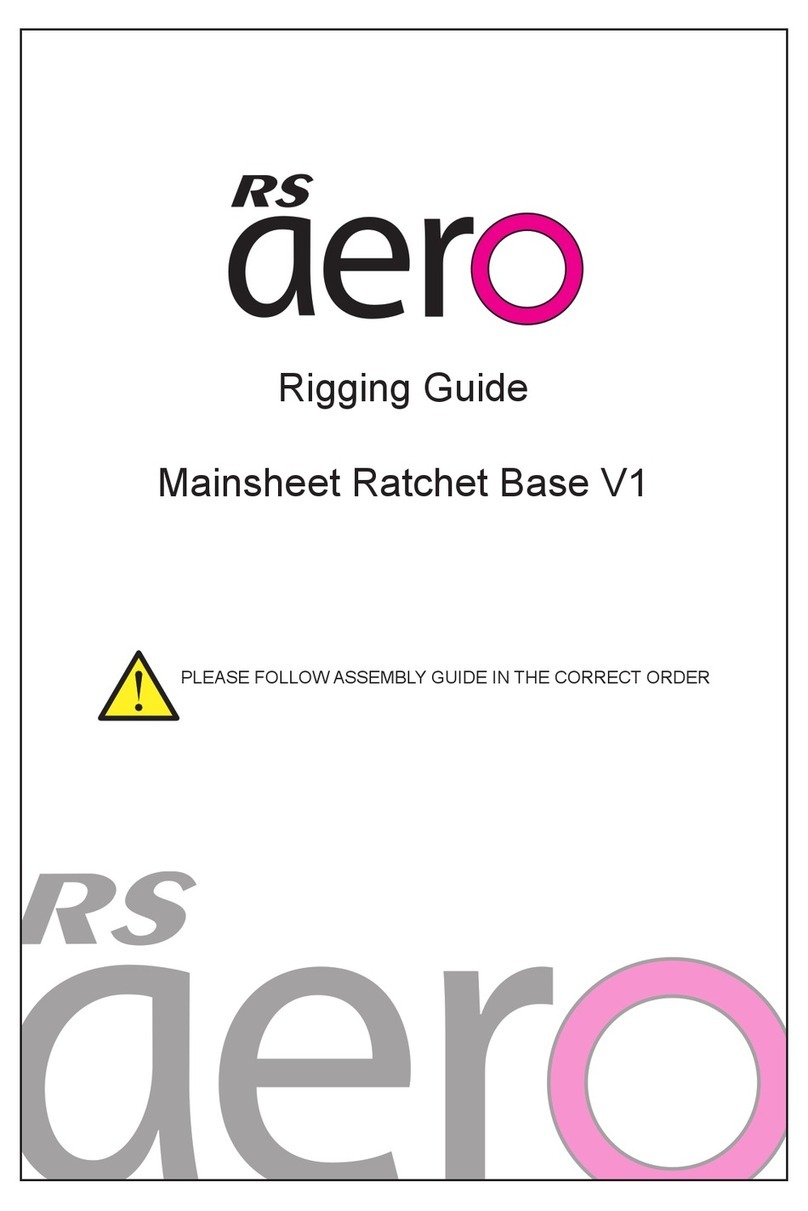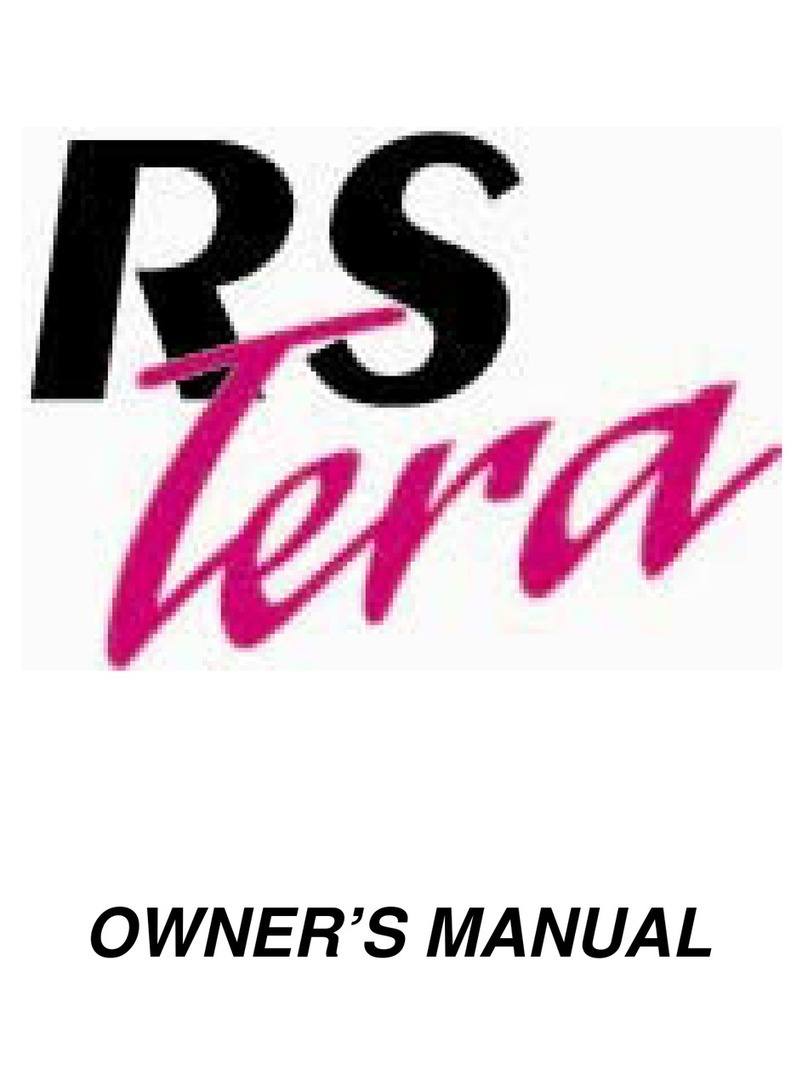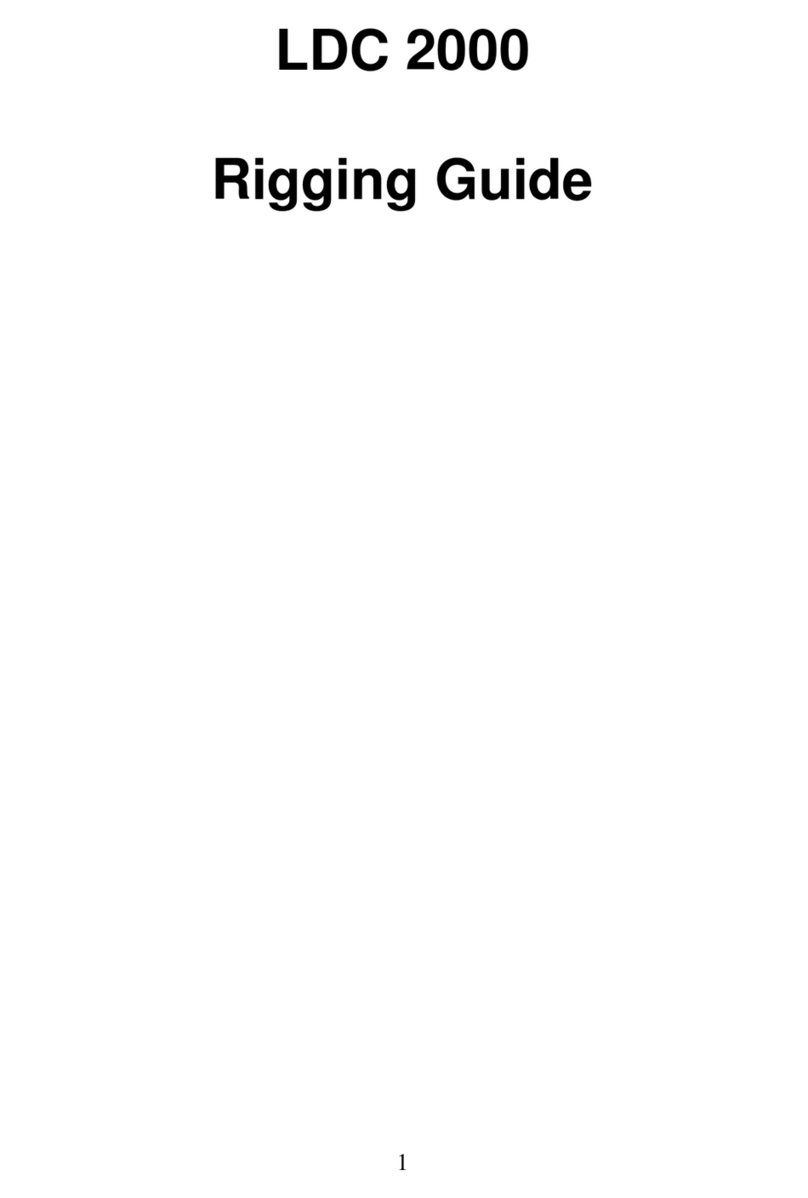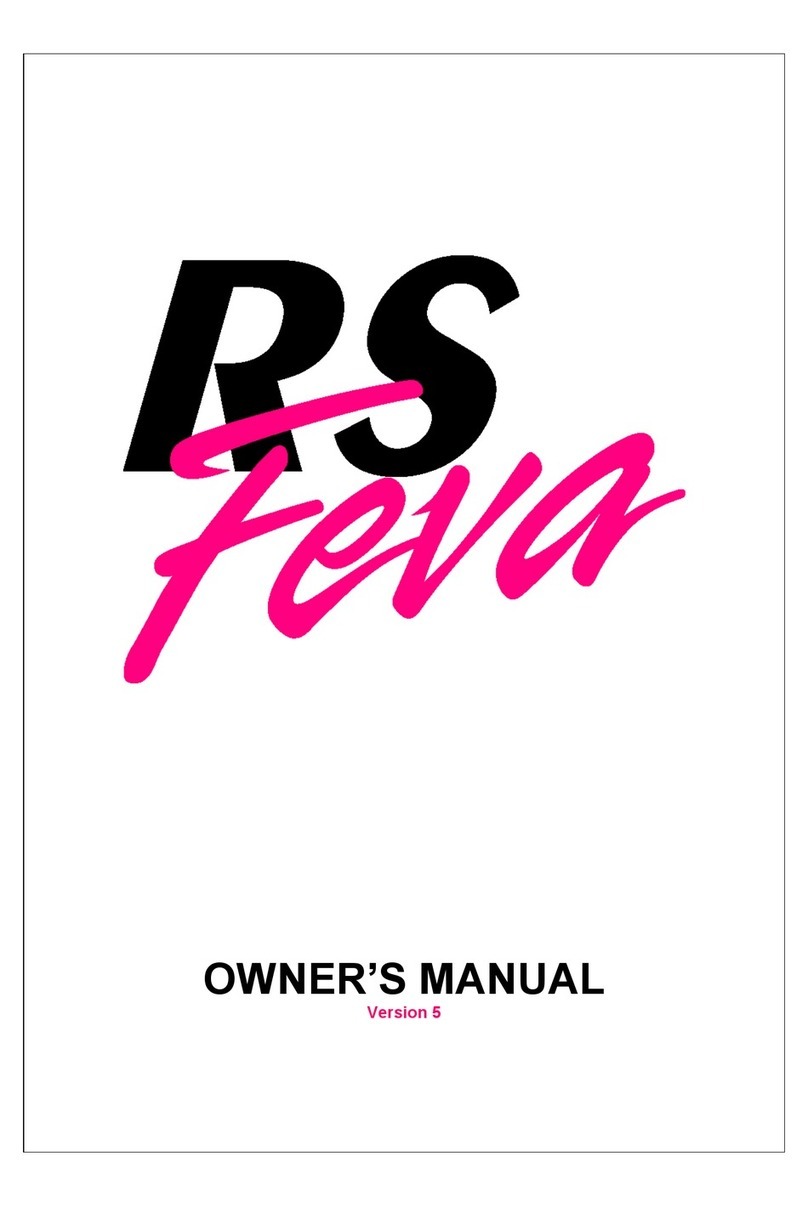1. INTRODUCTION
Congratulations on the purchase of your new RS QUBA and thank you for choosing
an RS product. We are confident that you will have many hours of great sailing and
racing in this truly excellent design.
The RS QUBA is an exciting boat to sail and offers fantastic performance. This
manual has been compiled to help you to gain the maximum enjoyment from your
RS QUBA, in a safe manner. It contains details of the craft, the equipment supplied or
fitted, its systems, and information on its safe operation and maintenance. Please
read this manual carefully and be sure that you understand its contents before using
your RS QUBA.
This manual will not instruct you in boating safety or seamanship. If this is your first
boat, or if you are changing to a type of craft that you are not familiar with, for your
own safety and comfort, please ensure that you have adequate experience before
assuming command of the craft. If you are unsure, RS, your RS dealer, or your
national sailing federation – for example, the Royal Yachting Association – will be
able to advise you of a local sailing school, or a competent instructor.
Please keep this manual in a secure place and hand it over to the new owner if
you sell the boat.
For further information, spares, and accessories, please contact:
RS Sailing
Premier Way
Abbey Park
Romsey
Hants SO51 9DQ
Tel.: +44(0)1794 526760
Fax: +44(0)1794 278418
For details on your local RS dealer, please visit www.rssailing.com






































